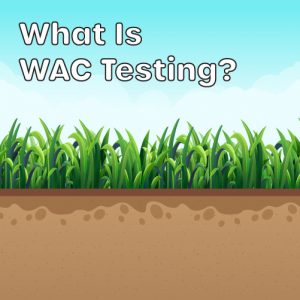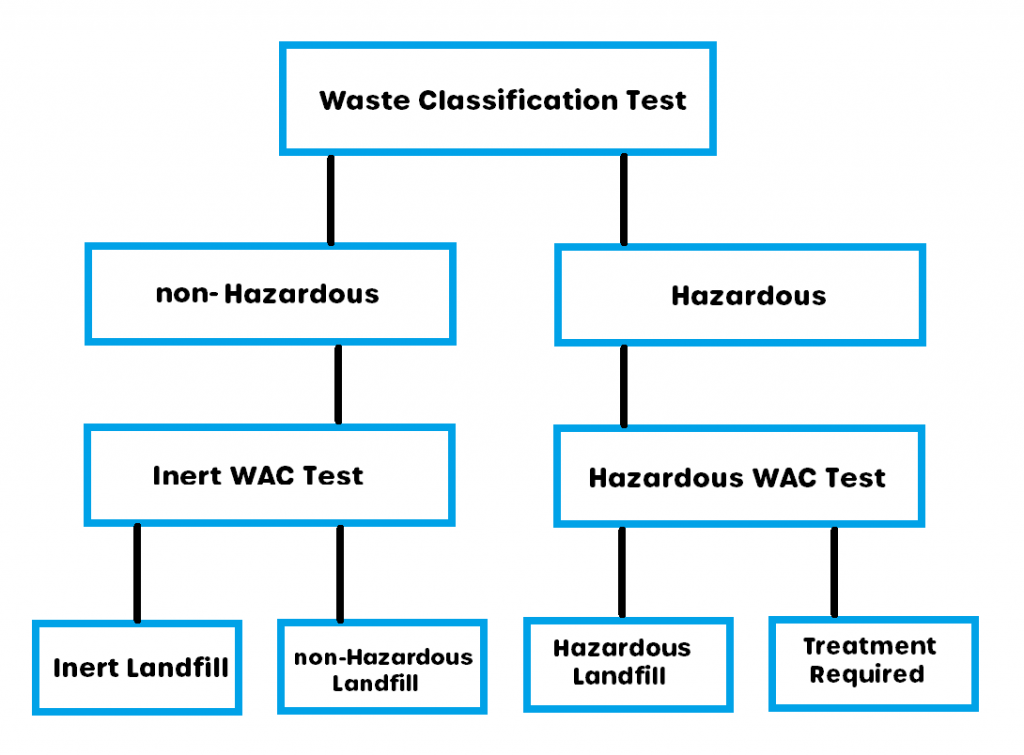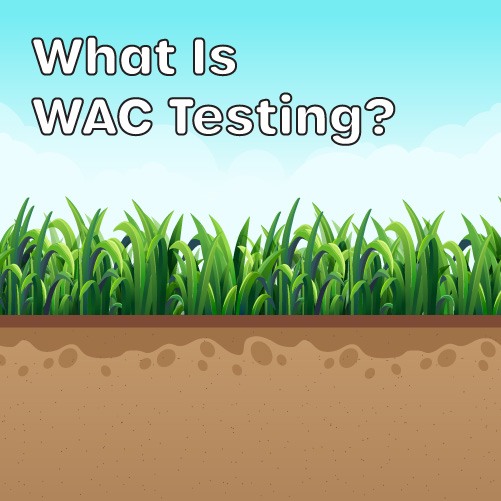
What Is A WAC Test?
Waste Acceptance Criteria (WAC Testing) sets parameters for different types of waste and determines the criteria for waste to be accepted to a particular landfill type.
WAC Testing will essentially analyse the leaching ability of contaminants in the soil to identify how contaminants will act when in a landfill.
After soil waste has undergone basic Waste Classification to classify it as non-hazardous or hazardous it can then undergo relevant WAC Testing.
Following Waste Classification Testing, a certificate of analysis will be issued.
WAC testing can be carried out on:
- Contaminated Soil
- Spent Grit
- Industrial Waste and Other Waste Streams
When Should I Do Waste Classification Testing?
As a waste producer, you have a ‘Duty of Care’ to carry out a basic characterisation of any soil sent to landfill.
To achieve a basic characterisation you must carry out a Waste Classification Test. Once this is complete the soil waste can then undergo a WAC Test.
These two tests will provide all the information required to provide to the landfill operator:
- A waste classification test will inform you of what the soil is.
- A WAC Test will let you know where the soil can go. Remember, you must know what it is before you can find out where it can go.
Soil Testing
Testing for soils became mandatory following the introduction of the 2005 Landfill Regulations and has extensively been used in order to determine the class of landfill (as defined by the Landfill Directive) to which a waste soil may be sent to.
Waste Classification is necessary for identification of what controls apply to the movement of the waste and a legal requirement/duty of care. Materials purely classified on the basis of WAC may have been assigned the incorrect EWC code.
The testing primarily relates to the presence of substances that may leach out of the soil and into the landfill, however, the testing does not determine whether the soil itself displays and hazardous properties as defined by the CLP Regulation. The assessment of hazardous properties must be carried out in accordance with WM3 EA Guidance in order for the correct classification of the waste soil.
Which WAC Test Should I Do?
If waste is classified as non-hazardous it can either go to a non-hazardous or inert landfill.
It is often the cheaper option to send soil waste to an inert landfill if possible rather than non-hazardous landfills.

Inert WAC Test
To be accepted to an inert landfill, waste must undergo an Inert WAC Test.
The waste must then go on to meet certain criteria regarding contaminant leaching and other characteristics. If the soil waste fails this Inert WAC Testing, then it cannot go to an inert landfill and must rather be sent to a non-hazardous landfill.
Hazardous WAC Test
Alternatively, if waste is classified as hazardous, it must then undergo a Hazardous WAC Test to see if it can be accepted to hazardous landfills.
If the waste fails hazardous WAC Testing then it must be treated until it meets the relevant criteria for hazardous landfills.
Experts In WAC and Waste Classification
ECL service all project sizes from small business to large corporate infrastructure projects.
Fill out our ECL Enquiry Form or call us on 01443 841760 for any queries regarding WM3 Assessments, and Site Investigation Surveys

